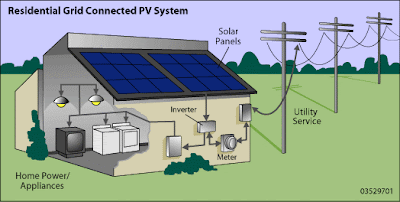Solar panel kit is pre-packed solar equipment that after installation can form an operating solar power system for your home. Almost all solar kits come with everything you need to have a working solar system (complete equipment). For some kits you may need to buy additional items, so you should be careful.
Solar panel kits can vary in price depending on their build, power generation, size, and components. Therefore, they can cost from a few hundred up to thousands of dollars. Once you choose and buy a solar panel kit, it will be shipped to your home and all you have to do is install it yourself (DIY- do-it-yourself).
Before buying a solar panel kit, you should do some research and
calculations regarding current energy consumption in your home, and how it will change in the future. Thus you will know how much solar power
and
how many panels you will need. You should also decide whether your solar power system will be grid-connected, off-grid or hybrid.
Here are the basic components that you can expect in most solar panel kits: solar panels, solar inverter, batteries (off-grid), charge controller (off-grid), mounting hardware, wiring and connectivity parts. You can choose between two types of solar panels: polycrystalline and monocrystalline. Monocrystalline panels are more expensive, more efficient, and more heat resistant.
Solar panel kits are suitable for small homes. There are solar panel kits for large homes but as you go up in size (1,000W and more), solar installations become more complicated. It doesn’t make sense to install a large solar panel system yourself. And If you are not sure about your knowledge it is recommended to seek professional help. Installing your solar panel kit may save you money but keep in mind that it can be time-consuming, challenging, and even risky in terms of safety and how to do it right. Also, if your solar panel kit is grid-tied you have to check whether your utility company allows self-installed solar systems to connect to the grid.
If you are absolutely beginner to solar electricity it is a good idea to buy a solar starter kit. Starter solar panels kit won’t be able to fully power your home but it is just a few hundred dollars and includes the parts you need to start seeing if solar is right for you. It can power some of your electric appliances and it is usually grid-connected, which means that it will work with the existing grid. Typically solar starter panels ranging from 50W - 400W.
Solar panel kits are a good option for garages, farms, boats, caravans and off-grid cabins.
More detailed information you can find here:

